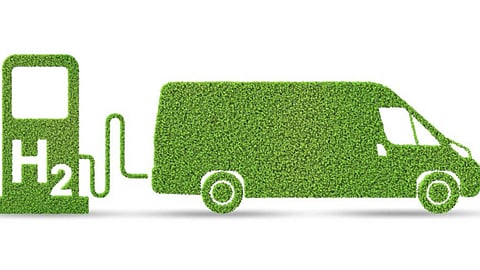Climate change is an existential crisis of our times and we must act today to solve it. Across the world, industries and countries are making enormous investments to create a sustainable way of life. Decarbonisation of energy, industries and transportation systems is a critical lever towards creating a sustainable future and this necessitates the adoption of new low/ zero carbon fuels and technologies.
At COP26, India committed to be a ‘net-zero’ emitter of greenhouse gases (GHG) by 2070. Among the various initiatives toward this goal, the Ministry of Power unveiled the first part of India's much-awaited Green Hydrogen Policy on 17 February 2022.
As a part of this, the government of India will focus early efforts on hard-to-abate sectors such as steel, fertilisers, refining, methanol, and maritime shipping. The usage of green hydrogen in these sectors will enable significant decarbonisation of the highest carbon-emitting sectors.
India also has a distinct advantage in low-cost renewable energy generation, given its considerable access to solar energy, which can position India among the world's lowest-cost producers of green hydrogen. We, as a nation, should aspire to achieve zero emissions by reducing GHG emissions and supporting the transition to decarbonised power.
This is indeed a herculean task and will not be achieved overnight. In my view, the core of this approach in addressing the climate change issue should be two-pronged to enable a smooth transition from the present to the future: short-term improvements and long-term new technology-based solutions.
In the short term, we should push to make every one of our polluting products better and cleaner. An example would be emissions on existing hydrocarbon fuels getting tighter, as we move from BS6 to BS7 and continue to drive significant progress in fuel economy, effectively reducing energy usage per unit.
An extension of it would be to work toward adapting the products so that we can use carbon-neutral fuels like ethanol, synthetic fuels, compressed natural gas (CNG), hydrogen CNG and liquefied natural gas to achieve a lower carbon footprint.
Long-term solutions like battery electric vehicles (EVs) are emerging as a game-changer in the mobility sector by bringing the right power solutions for fast and effective adoption. However, scaling this, especially for a country like India, requires a proper technological maturity, economic viability, infrastructure and favorable regulatory and policy set-up. India has made some strong shifts with schemes, such as ‘faster adoption and manufacturing of hybrid and electric vehicles’ (FAME) 1 and 2.
Harbingers of change
True carbon neutrality is where green hydrogen is a fuel of choice. Technology innovation in electrolysers, coupled with electricity generation from zero-carbon renewable, has enhanced the prospect of abundant low-carbon green hydrogen and given hydrogen the spotlight it deserves.
As the lightest and most abundant element in the universe, hydrogen is rarely found in nature in its elemental form and must always be extracted from other hydrogen-containing compounds. Thus, how well hydrogen contributes to decarbonisation is determined by its production method. Unlike black, brown, or grey hydrogen produced via coal or lignite gasification, green hydrogen is produced using water electrolysis, with electricity generated by renewable sources.
Advanced technologies such as polymer electrolyte membrane (PEM) electrolysis technology strive to make the conversion more efficient. The technology is evolving rapidly and large-scale plants are coming up worldwide, which will help bring economies of scale to drive down the cost of green hydrogen, thus making the ‘total cost of ownership’ favourable.
Today, ‘fuel cell’ is the most talked about technology for using green hydrogen in mobility. However, it is still developing and too expensive for India to adopt on a mass scale. As the next best alternative, ‘hydrogen internal combustion engine’ (H2ICE) platforms might be a good intermediate solution. It helps avoid the typical performance limitations and efficiency compromises associated with converting diesel or natural gas engines to hydrogen fuel.
I am optimistic about this solution coming to the market, after significant technological advancements in developing these fuel-agnostic engine platforms early next year. These hydrogen engines will offer OEMs and end-users the benefit of adaptability by continuing to use familiar mechanical drivelines.
As the ecosystem for hydrogen adoption in India matures, it will be imperative to continue addressing carbon emissions and cutting exhaust pollution in multi-pronged ways, mixing conventional and high-tech options. Hybrid solutions will act as a bridge from ‘fossil to carbon’ neutrality.
Research and engineering teams need to ramp up the efficiency of current engines and generator lines while designing them to burn cleaner fuels, including natural gas and blended fuels. So, when it comes to making a dent in the world's urgent and arduous climate change mission, let’s say the journey has only begun.

